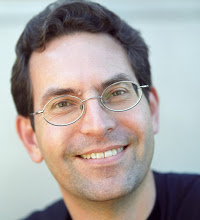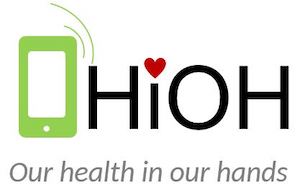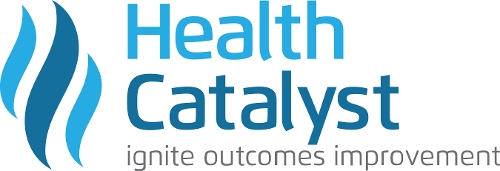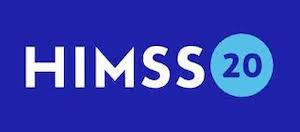 Next week, 50,000 of our closest friends will gather together in Orlando to learn about the latest trends in the healthcare IT industry. I’ll be giving a few keynote addresses, trying to predict what the Trump administration will bring, identify those technologies that will move from hype to reality, and highlighting which products are only “compiled” in Powerpoint - a powerful development language that is really easy to modify! The Trump administration is likely to reduce regulatory burden but is unlikely to radically change the course of value-based purchasing. This means that interoperability, analytics, and workflow products that help improve outcomes while reducing costs will still be important...
Next week, 50,000 of our closest friends will gather together in Orlando to learn about the latest trends in the healthcare IT industry. I’ll be giving a few keynote addresses, trying to predict what the Trump administration will bring, identify those technologies that will move from hype to reality, and highlighting which products are only “compiled” in Powerpoint - a powerful development language that is really easy to modify! The Trump administration is likely to reduce regulatory burden but is unlikely to radically change the course of value-based purchasing. This means that interoperability, analytics, and workflow products that help improve outcomes while reducing costs will still be important...
artificial intelligence (AI)
See the following -
Google's Release of TensorFlow Could be a Game-changer in the Future of AI
 The development of smarter and more pervasive artificial intelligence (AI) is about to shift into overdrive with the announcement by Google this week that TensorFlow, its second-generation machine-learning system, will be made available free to anyone who wants to use it. Machine learning emulates the way the human brain learns about the world, recognising patterns and relationships, understanding language and coping with ambiguity. This is the technology that already provides the smarts for Google’s image and speech recognition, foreign language translation and various other applications. This is valuable technology, and it is now open source; the source code is freely available and can be modified, developed in new directions and redistributed in the same way that the Linux operating system is open.
The development of smarter and more pervasive artificial intelligence (AI) is about to shift into overdrive with the announcement by Google this week that TensorFlow, its second-generation machine-learning system, will be made available free to anyone who wants to use it. Machine learning emulates the way the human brain learns about the world, recognising patterns and relationships, understanding language and coping with ambiguity. This is the technology that already provides the smarts for Google’s image and speech recognition, foreign language translation and various other applications. This is valuable technology, and it is now open source; the source code is freely available and can be modified, developed in new directions and redistributed in the same way that the Linux operating system is open.
- Login to post comments
Halamka Gears Up for HIMSS 2017
- Login to post comments
Halamka Sets Healthcare Innovation Priorities for 2017
 As we begin 2017, what should be the focus of our work over the next year?... Regardless of the policies, repeals, and delays of the Trump administration, we’ll still need to optimize usability and support the four goals of value-based purchasing - quality measurement, total medical expense management, practice process improvement and technology adoption. BIDMC has already created a prototype of groupware documentation and we should complete our next generation inpatient documentation solution by mid 2017. Part of that work incorporates open source secure texting as part of the medical record. We’re also piloting Google’s G-suite so that our stakeholders can store/share, collaborate, and communicate on any device from anywhere using only a browser...
As we begin 2017, what should be the focus of our work over the next year?... Regardless of the policies, repeals, and delays of the Trump administration, we’ll still need to optimize usability and support the four goals of value-based purchasing - quality measurement, total medical expense management, practice process improvement and technology adoption. BIDMC has already created a prototype of groupware documentation and we should complete our next generation inpatient documentation solution by mid 2017. Part of that work incorporates open source secure texting as part of the medical record. We’re also piloting Google’s G-suite so that our stakeholders can store/share, collaborate, and communicate on any device from anywhere using only a browser...
- Login to post comments
Halamka's Dispatch from HIMSS 2017
 As I wrote last week, I expected 2017 HIMSS to be filled with Wearables, Big Data, Social Networking concepts from other industries, Telemedicine, and Artificial Intelligence. I was not disappointed. 42,000 of my closest friends each walked an average of 5 miles per day through the Orlando Convention Center. One journalist told me “It’s overwhelming. You do your best to look professional and wear comfy shoes!” After 50 meetings, and 12 meals in 3 days, here’s my impression of the experience...
As I wrote last week, I expected 2017 HIMSS to be filled with Wearables, Big Data, Social Networking concepts from other industries, Telemedicine, and Artificial Intelligence. I was not disappointed. 42,000 of my closest friends each walked an average of 5 miles per day through the Orlando Convention Center. One journalist told me “It’s overwhelming. You do your best to look professional and wear comfy shoes!” After 50 meetings, and 12 meals in 3 days, here’s my impression of the experience...
- Login to post comments
HARMAN and IBM Watson Internet of Things Introduce Cognitive Rooms that Bring Connected Experiences to the Consumer
 HARMAN Professional Solutions and IBM Watson Internet of Things (IoT) today unveiled Voice-Enabled Cognitive Rooms. Using IBM's Watson artificial intelligence (AI) technology and HARMAN AKG microphones, JBL speakers and AMX AV control and switching systems, the companies bring highly connected experiences to medical facilities, corporate offices, hotels, cruise ships and other hospitality environments...
HARMAN Professional Solutions and IBM Watson Internet of Things (IoT) today unveiled Voice-Enabled Cognitive Rooms. Using IBM's Watson artificial intelligence (AI) technology and HARMAN AKG microphones, JBL speakers and AMX AV control and switching systems, the companies bring highly connected experiences to medical facilities, corporate offices, hotels, cruise ships and other hospitality environments...
- Login to post comments
Harvard Medical School, Kiel University of Applied Sciences and others are using Nextcloud in the response to COVID-19
 Nextcloud Hub is used in dozens of universities, hospitals, and medical institutes in various ways, aiding in fighting the pandemic. The DICOM viewer app for Nextcloud in particular is used in Brazil in the fight against COVID-19. At the Kiel University of Applied Sciences Nextcloud is used in the development of bluetooth measurement algorithms from the OHIOH.de research team. This is a research project using machine learning and AI to improve the accuracy of Bluetooth-based COVID-19 tracking apps where information is collected through "Bluetooth". The application focuses on research topics to warn and help with required actions in fighting and minimizing the spread of COVID-19.
Nextcloud Hub is used in dozens of universities, hospitals, and medical institutes in various ways, aiding in fighting the pandemic. The DICOM viewer app for Nextcloud in particular is used in Brazil in the fight against COVID-19. At the Kiel University of Applied Sciences Nextcloud is used in the development of bluetooth measurement algorithms from the OHIOH.de research team. This is a research project using machine learning and AI to improve the accuracy of Bluetooth-based COVID-19 tracking apps where information is collected through "Bluetooth". The application focuses on research topics to warn and help with required actions in fighting and minimizing the spread of COVID-19.
- Login to post comments
Health Care Should Be Five By Five
 People love to talk about "moonshots" in health (e.g., Joe Biden, GE). I'm not exactly sure why that is a good goal. The actual moonshot took thousands of people many years and tens of billions, all to send a few people far away for a short period and never again. It may or may not have produced otherwise useful technological advances (Tang, anyone?). Sounds a lot like health care now, actually. I suggest a different goal: let's make health care "Five by Five." Five by five is a communications term to quantify the signal-to-noise ratio. It means the best possible readability with the best possible signal strength. I.e., the signal is loud and clear. By contrast, "one by one" would essentially mean "I can't figure out what you're telling me but that's OK, because I can't really hear you"...
People love to talk about "moonshots" in health (e.g., Joe Biden, GE). I'm not exactly sure why that is a good goal. The actual moonshot took thousands of people many years and tens of billions, all to send a few people far away for a short period and never again. It may or may not have produced otherwise useful technological advances (Tang, anyone?). Sounds a lot like health care now, actually. I suggest a different goal: let's make health care "Five by Five." Five by five is a communications term to quantify the signal-to-noise ratio. It means the best possible readability with the best possible signal strength. I.e., the signal is loud and clear. By contrast, "one by one" would essentially mean "I can't figure out what you're telling me but that's OK, because I can't really hear you"...
- Login to post comments
Health Care's Kodak Moment
 For those of us of a certain age, a "Kodak moment" connotes a special event that should be captured by a photo, presumably on Kodak film. For younger generations, the term probably doesn't mean anything, because they don't know what Kodak is and have never seen film. That's why, for some, "Kodak moment" has come to suggest a turning point when big companies and even entire industries can become obsolete. Health care could soon be at such a point. Anthony Jenkins, a former CEO of Barclay's, recently warned that banks could face a Kodak moment soon...
For those of us of a certain age, a "Kodak moment" connotes a special event that should be captured by a photo, presumably on Kodak film. For younger generations, the term probably doesn't mean anything, because they don't know what Kodak is and have never seen film. That's why, for some, "Kodak moment" has come to suggest a turning point when big companies and even entire industries can become obsolete. Health care could soon be at such a point. Anthony Jenkins, a former CEO of Barclay's, recently warned that banks could face a Kodak moment soon...
- Login to post comments
Health Catalyst Launches Open Source Machine Learning: healthcare.ai
 Use of machine learning and predictive analytics to improve health outcomes has so far been limited to highly-trained data scientists, mostly in the nation's top academic medical centers. No longer. healthcare.ai is on a mission to make machine learning accessible to the thousands of healthcare professionals who possess little or no data science skills but who share an interest in using the technology to improve patient care. By making its central repository of proven machine learning algorithms available for free, healthcare.ai enables a large, diverse group of technical healthcare professionals to quickly use machine learning tools to build accurate models...
Use of machine learning and predictive analytics to improve health outcomes has so far been limited to highly-trained data scientists, mostly in the nation's top academic medical centers. No longer. healthcare.ai is on a mission to make machine learning accessible to the thousands of healthcare professionals who possess little or no data science skills but who share an interest in using the technology to improve patient care. By making its central repository of proven machine learning algorithms available for free, healthcare.ai enables a large, diverse group of technical healthcare professionals to quickly use machine learning tools to build accurate models...
- Login to post comments
Healthcare Innovation: Think Bigger, Fail Often.
 Alan Kay recently outlined some of the principles that he thought made Xerox's PARC so successful (if you don't know who Alan Kay is or why PARC was so special, you should try to find out). One was: "'It's baseball,' not 'golf'...Not getting a hit is not failure but the overhead for getting hits." That doesn't quite square with my impression of golf, but I take the point. It's about the price of success. As psychologist Dean Simonton pointed out in Origins of Genius: "The more successes there are, the more failures there are as well." "Quality," he wrote, "is a probabilistic function of quantity." We talk a lot about innovation these days, especially "disruptive innovation." Why not? It sounds cool, it allows people to think they're on the cutting edge, and it often excites investors. But perhaps we've lost sight of what it is supposed to actually be...
Alan Kay recently outlined some of the principles that he thought made Xerox's PARC so successful (if you don't know who Alan Kay is or why PARC was so special, you should try to find out). One was: "'It's baseball,' not 'golf'...Not getting a hit is not failure but the overhead for getting hits." That doesn't quite square with my impression of golf, but I take the point. It's about the price of success. As psychologist Dean Simonton pointed out in Origins of Genius: "The more successes there are, the more failures there are as well." "Quality," he wrote, "is a probabilistic function of quantity." We talk a lot about innovation these days, especially "disruptive innovation." Why not? It sounds cool, it allows people to think they're on the cutting edge, and it often excites investors. But perhaps we've lost sight of what it is supposed to actually be...
- Login to post comments
Healthcare's Death Star Thinking vs. Human Centered Design
 I missed it when it first came out, but a providential tweet from the always perceptive Steve Downs tipped me to a most interesting article from Jennifer Pahlka with the wonderful title “Death Star Thinking and Government Reform.” The article is not directly related to healthcare, although it does include healthcare examples, but Ms. Pahlka’s central point very much applies to most efforts to reform healthcare: The need to believe that a Death Star-style solution is at hand — that we have analyzed the plans and found the single point of failure — runs deep in our culture.
I missed it when it first came out, but a providential tweet from the always perceptive Steve Downs tipped me to a most interesting article from Jennifer Pahlka with the wonderful title “Death Star Thinking and Government Reform.” The article is not directly related to healthcare, although it does include healthcare examples, but Ms. Pahlka’s central point very much applies to most efforts to reform healthcare: The need to believe that a Death Star-style solution is at hand — that we have analyzed the plans and found the single point of failure — runs deep in our culture.
- Login to post comments
HealthTap Brings Artificial Intelligence to Self-Triage
 HealthTap, which calls itself the “world’s first global health practice,” is moving deeper into virtual care by introducing an artificial-intelligence engine to triage cases automatically. Tuesday, Palo Alto, California-based HealthTap is launching Doctor A.I. It’s an AI-powered system that has been trained by clinical knowledge collected from the 104,000 physicians and millions of patients on the HealthTap network. Doctor A.I. is, as the six-year-old company said, “trained in the art of digital empathy”...
HealthTap, which calls itself the “world’s first global health practice,” is moving deeper into virtual care by introducing an artificial-intelligence engine to triage cases automatically. Tuesday, Palo Alto, California-based HealthTap is launching Doctor A.I. It’s an AI-powered system that has been trained by clinical knowledge collected from the 104,000 physicians and millions of patients on the HealthTap network. Doctor A.I. is, as the six-year-old company said, “trained in the art of digital empathy”...
- Login to post comments
HealthTap Launches Dr. A.I.
 HealthTap, the world’s first Global Health Practice providing 24/7 immediate access to top doctors via video, text, and voice, today launched Doctor A.I., a personal Artificial Intelligence-powered “physician” that helps route users to doctor-recommended insights and care immediately. Each year, more than a billion people search the Web for health information, with approximately 10 billion symptom-related health searches per year on Google alone. Unlike a doctor, the Web only provides access to content semantically-related to these symptoms...
HealthTap, the world’s first Global Health Practice providing 24/7 immediate access to top doctors via video, text, and voice, today launched Doctor A.I., a personal Artificial Intelligence-powered “physician” that helps route users to doctor-recommended insights and care immediately. Each year, more than a billion people search the Web for health information, with approximately 10 billion symptom-related health searches per year on Google alone. Unlike a doctor, the Web only provides access to content semantically-related to these symptoms...
- Login to post comments
HealthTap Unveils “HealthTap Cloud™”
 HealthTap...today unveiled HealthTap Cloud™, a first-of-its-kind development platform that enables health developers to build applications more efficiently and cost effectively. HealthTap Cloud™ is powered by HOPES™, the world’s first Health Operating System, which connects the entire continuum of care to each person’s unique Personal Health Record (PHR). Application Programming Interfaces (APIs) and Software Development Kits (SDKs) that help developers build highly personalized web, iOS, and Android apps are available with HealthTap Cloud™...
HealthTap...today unveiled HealthTap Cloud™, a first-of-its-kind development platform that enables health developers to build applications more efficiently and cost effectively. HealthTap Cloud™ is powered by HOPES™, the world’s first Health Operating System, which connects the entire continuum of care to each person’s unique Personal Health Record (PHR). Application Programming Interfaces (APIs) and Software Development Kits (SDKs) that help developers build highly personalized web, iOS, and Android apps are available with HealthTap Cloud™...
- Login to post comments
HIMSS20 - The Open Health Companies That Were Going to Participate

The HIMSS20 conference has been cancelled as a result of concerns due to the global spread of the coronavirus. Although the conference is not taking place, we have decided to publish a variation on our annual HIMSS conference Open Health Guide. Open Health News has published Open Health Guides to HIMSS conferences almost since our founding. They were widely read with thousands of reads each. So they are now a tradition for our publication and there were many great open health companies that were going to have exhibits at the HIMSS20 conference as well as presentations. Dominant health IT vendors spend over a billion dollars a year in PR and marketing for their lock-in solutions. Unable to match that kind of PR power, the annual HIMSS conference has been one of the few opportunities where Open Health companies have had to present their solutions to the world.
- The Future Is Open
- Login to post comments